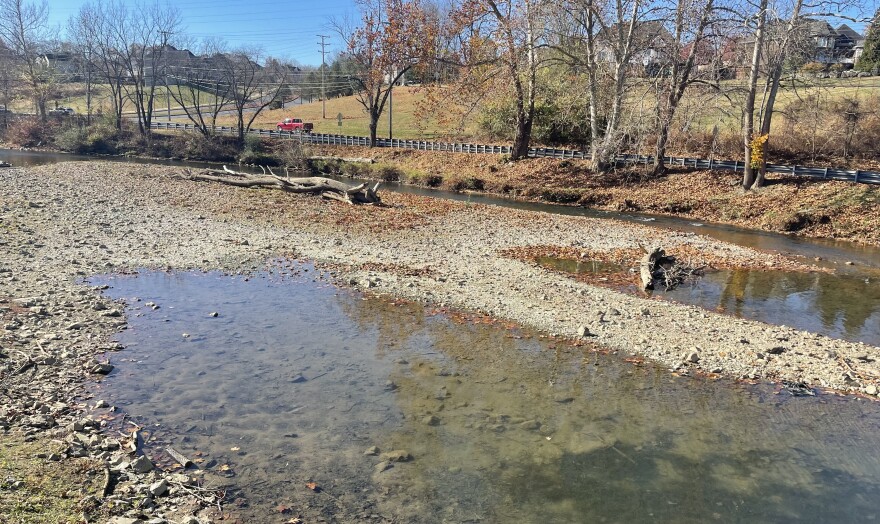EASTON, Pa. — Most days, Christa Kelleher, a Lafayette College professor and hydrologist, takes a walk or run along the Bushkill Creek.
It’s not hard to notice — the creek is lower than normal.
“It is definitely low,” Kelleher said. “I'm going to have a few students looking at that this spring, because this is sort of unusual for us, but it's becoming more and more like the norm — that we have really low stream flow, or we're in drought.”
The Lehigh Valley is parched, yet again.
For the second year in a row, the region is dealing with dry, windy conditions for an extended period of time, prompting state officials to issue a drought watch.
The weeks-long dearth of precipitation has fueled brush fires and even caused some wells to go dry. While hope for a reprieve is still strong, it might not come quickly, and experts warn this pattern could only worsen in the years ahead if climate change continues in force.
After below average rainfall in September, and only trace amounts recorded in October, the Valley is behind by about 8 inches of rain.
“It looks like that's not gonna be nearly enough. We're so far behind.”EPAWA meteorologist Bobby Martrich
Even with some rain forecasted for Sunday, chances are slim it’ll be enough to make a purposeful dent in the deficit.
“We're hopeful,” EPAWA meteorologist Bobby Martrich said. “I think we're going to get at least a quarter of an inch of rain Sunday afternoon and overnight. There's some models that have it as high as a little more than a half inch, which would be great, but I'm not holding my breath.
“It looks like that's not gonna be nearly enough. We're so far behind.”
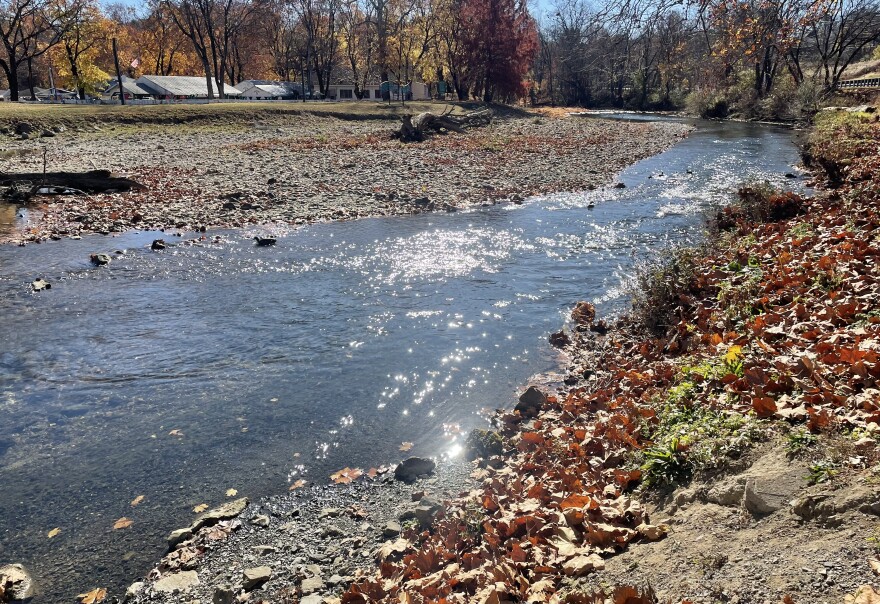
‘Drilling wells deeper’
It has been weeks since a meaningful amount of measurable rain has fallen across the region, and the impacts are already being felt — from a nearly-600-acre fire on Blue Mountain to residential wells going dry.
The Valley is in a drought, with the U.S. Drought Monitor showing Lehigh and Northampton counties in extreme and severe drought, respectively. The state Department of Environmental Protection has declared a drought watch for both counties. As a result, the Lehigh County Authority has asked residents to voluntarily begin conserving water.
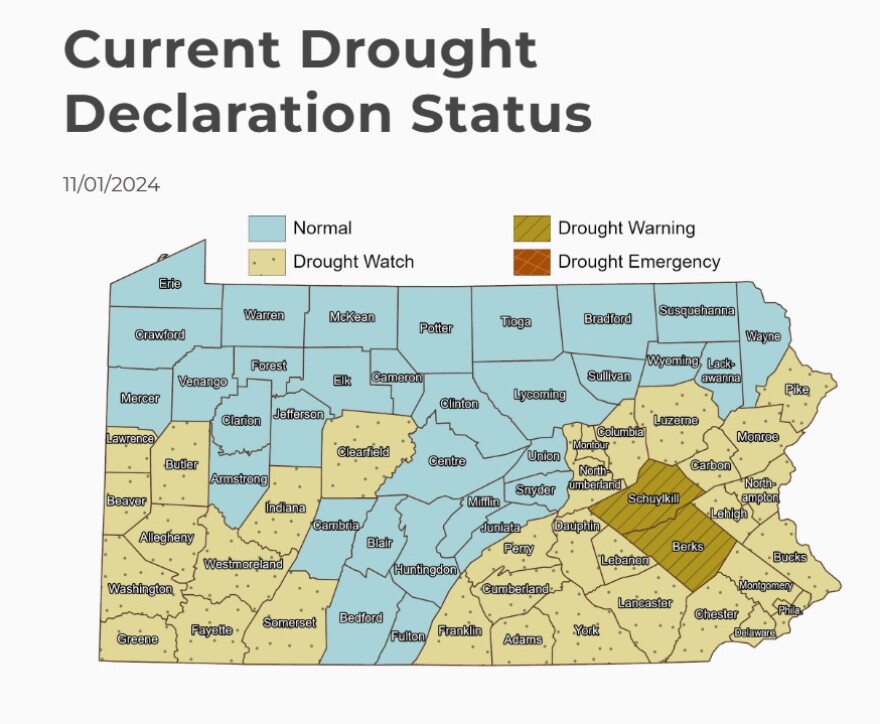
A red flag warning was issued for the Valley on Friday — the second so far this month.
And, Northampton County Council instituted a burn ban starting Sunday. Once it takes effect, the ban will remain in effect for 30 days, unless county council opts to cancel it sooner or extend it.
Officials from the state Department of Conservation and Natural Resources on Tuesday announced a campfire ban on state park and forest lands until further notice. Prescribed burns have also been paused.
“For the last few weeks, we have been drilling wells deeper for customers who have wells that are not producing enough [gallons per minute] and drilling new wells for people with springs running dry,” said Jason “Jake” Kocher, of Kocher’s Water Pumps & Tanks in Bath.
When a well goes dry, water levels drop below a pump intake, according to the United States Geological Survey.
“This does not mean that a dry well will never have water in it again, as the water level may come back through time as recharge increases,” according to the USGS.
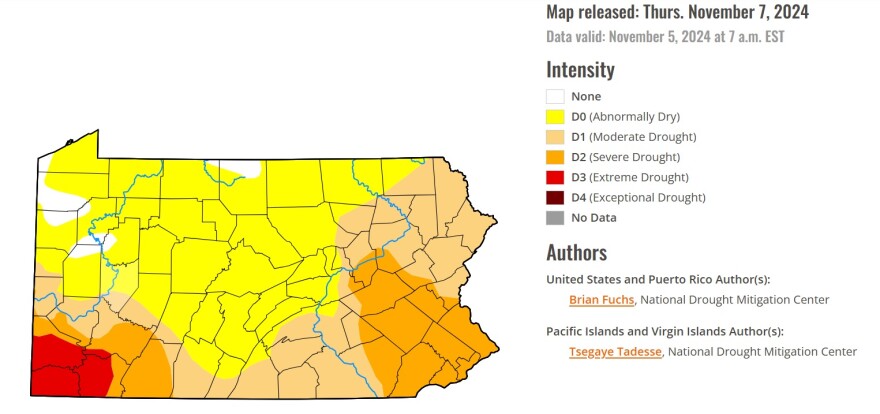
There are several ways residents can make sure they’re not accidentally wasting water and adding to the problem at home.
“Sometimes the flapper leaks very slowly and adds stress on low yielding wells,” Kocher said. “If a toilet has a leaking flapper, it could easily waste 20 to 70 gallons per day.”
Even though the growing season is mostly over, residents should make sure their garden hose bibs are turned off and aren’t dripping, which can also waste water.
“If you have water treatment, make sure the units are working properly,” he added. “Sometimes, seals on the control head valves get damaged and leak to drain 24 hours a day. This puts stress on the well and the septic system.”
Another tip for residents — space out laundry.
“We get a lot of calls on weekends from people using excess water because they are too busy during the week,” he said. “We tell the people that call with no water issues that were running a lot of water to shut the breaker off for an hour and then turn it back on after the hour and use the well like a normal weekday and you should be fine.”
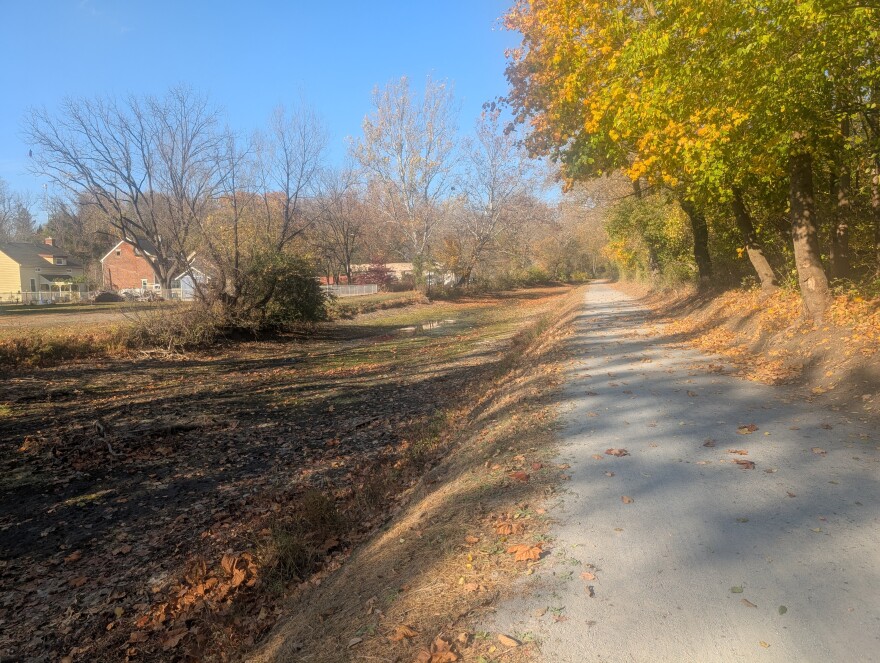
‘We need consistent little storms’
While it might seem intuitive that rain would bust a drought, the amount of rain and how quickly it falls matters.
The ground, compacted and dry, can’t handle soaking up a deluge at this point, and could cause tremendous runoff. At the same time, persistent windy and dry conditions could make a drizzle evaporate without making a dent in the deficit.
What the Lehigh Valley needs, experts said, is consistent, moderate rain over the course of the next month or so.
“We need consistent little storms, just frontal rainfall."Christa Kelleher, a Lafayette College professor and hydrologist
“We need consistent little storms, just frontal rainfall,” Kelleher said. “Those nice, slow fronts moving across just nice drizzly rain for a couple of days throughout the month, if not most of the month, that would be best to get everything saturated again.
“And, nice and slowly — not everything dropping and causing all sorts of erosion and flooding and other problems downstream.”
Unfortunately, long range forecasts show it may take the Valley a while to dig out of the drought.
While the first half of November is expected to have slightly below average precipitation, the back half is forecast to have near average precipitation, according to EPAWA’s long range outlook. December is also expected to be near average.
Forecasters thought a system coming in this weekend might join with the remnants of Hurricane Raphael, which just made landfall in Cuba as a Category 3 hurricane, but that hasn’t worked out.
“It's going to stay separate, it looks like,” Martrich said. “We're really not going to have anything from that, profitable-remnants-wise, but it's still going to produce more rain than we've had in a while.
"So, that's a good thing.”
(1 of 5) JUST IN: U.S. had its 2nd-warmest October on record.
— NOAA (@NOAA) November 8, 2024
A record 87% of the nation was in drought or unusually dry.
More from our #October 2024 #StateofClimate Report:https://t.co/sJnQPma6N2@NOAANCEI pic.twitter.com/bVWoTIwVlR
‘The rain always comes’
Even though this period of dryness and drought is wearing on, it won’t last forever, Kelleher said.
“I think we still have such abundant water resources here that we're not going to be in a bind long-term. The rain always comes, or seems to always come,” Kelleher said. “But, I think, as we look to the future, we're going to be feeling the pinch of this type of condition happening more and more.”
The Valley has also seen periods of excessive rainfall — as recently as a few months ago.
In August, the region saw heavy rain, leading to flash floods and prompting water rescues. The rainfall neared 5 inches in parts of the area, including Tatamy in Northampton County, which saw 4.91 inches.
In January, schools were closed and rainfall records were set during a storm that caused thousands to lose power and sent emergency responders out to rescue drivers from the high water.
While those are only two examples, they highlight the dramatic shifts in weather extremes the region is experiencing more often, attributed to climate change.
“We're seeing these shifts where we're getting more and more precipitation over shorter and shorter periods."Christa Kelleher, a Lafayette College professor and hydrologist
“We're seeing these shifts where we're getting more and more precipitation over shorter and shorter periods,” Kelleher said. “And that's when we have problems, because that's not effectively recharging the subsurface and then allowing water to sustain base flow in streams.”
Heavy rainfall rushing through the ground in large volumes can also contribute to sinkholes — an issue the Valley is all too familiar with after sinkholes opened up on the D&L Trail and Route 22 this year.
Before, there was too much rain. Now, there’s too little.
“The other thing to keep in mind is we already have changed how much water can make it into the subsurface within our cities,” Kelleher said. “So, we're already sort of operating at this state where we've reduced a lot of available area for recharge because we've covered so much of it with impervious areas.”
In just the past five years, about 23 million square feet of warehousing was proposed across Lehigh and Northampton counties, but has yet to get through the approval process. Most recently, in September, Wilson Council approved, in a 7-0 vote, plans for the Easton Commerce Park, a million-plus-square-foot warehouse.
“It's just something, I think, for us to be aware of in this area, as we continue to build or expand our footprint, that can also impact water resources,” she continued. “And so, this idea that we have both climate change and other human impacts on the landscape that are going to change our local water budget is something we just have to, I think, keep a pulse on.”

